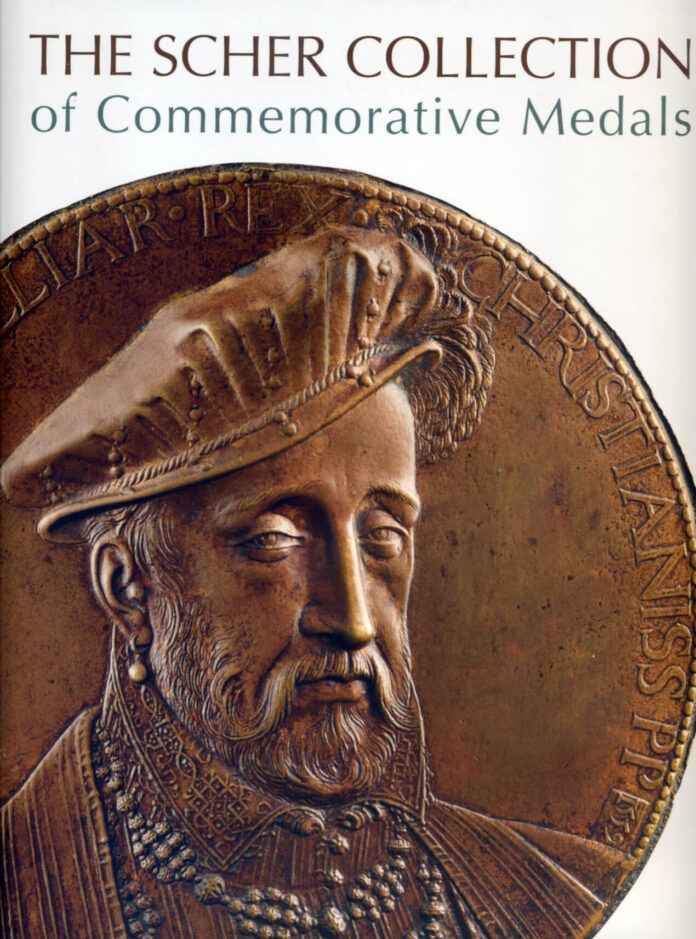
The Scher Collection is regarded as the most important collection of Renaissance-era portrait medals in private hands. It brings together a range of masterpieces from the period and, with regard to its size and the quality of its pieces, outshines some of the world’s top museums. In 2016, it became clear that the Scher Collection would soon be in a museum itself. The long-standing collaboration between dedicated collector Stephen K. Scher and the Frick Collection in New York has borne fruit for the museum: a considerable portion of the collection has gone to this institution as a gift, while a further portion has been promised to it. A comprehensive catalogue, edited by the collector himself and published by the Frick Collection, details the kind of masterpieces we can expect to find in the collection. But this weighty book is more than just a catalogue: it’s an academic introduction to the medal as an art form and a love letter to these objects.
884 Medals, Most Featuring Portraits, Often from the Renaissance Period
The catalogue includes 884 medals, with the main focus being, as you might expect, portraits from the Renaissance. The medals are categorized according to the nationality of their creators and presented in seven chapters: Italy; Germany and Austria; France; the Netherlands; England; Russia and Scandinavia; Switzerland, Mexico, and the United States. Each chapter opens with an introduction by a well-known expert: Ulrich Pfisterer for Italy, Martin Hirsch for Germany and Austria, Mark Jones for France, Jan Pelsdonk for the Netherlands, Christopher Eimer for England, and Marie-Astrid Pelsdonk for Russia and Scandinavia. The only chapter without an introduction is the final one focusing on Switzerland, Mexico, and USA, which covers a small but nevertheless wonderful series of pieces by engravers from these countries.
The Currency of Fame
Needless to say, the medals are detailed just as masterfully in this catalogue as they were the first time we encountered them in the 1994 book “Currency of Fame,” which has now become a standard reference. Each piece is described in detail, while the inscriptions, often in Latin, are translated. Each medal is accompanied by a brilliant photo that illustrates the level of craftsmanship we’re dealing with. Alongside the relevant references, each medal is also accompanied by a small historical text providing all the information required to place the medals in their historical context.
With an extensive bibliography (62 pages!) as well as a brief biography for each of the artists involved, this catalogue is a great resource for any readers conducting their own research. Another stand-out feature is the truly comprehensive index, which makes it a lot easier to find individual medals. It’s amazing to see how much effort the authors have put into this work!
Medals Picked out by an Aesthete
But if you think Stephen Scher restricted his collection to Renaissance medals, this catalogue is about to prove you wrong. This aesthete was obsessed with collecting all things beautiful, from the superb medal crafted by Augustus Saint-Gaudens, depicting “Treasure Island” author Robert Louis Stevenson, to the medal made by a French artist in 1965, depicting the (then) solitary Port of Alicante.
One has to admire the remarkably assured sense for artistic style the collector must have had in order to pick out these stunning exceptions from the crowds of factory-made medals being mass-produced in the 19th century. This catalogue demonstrates once again just how much a collection reflects the personality of the collector.
In the Footsteps of a Student…
And that’s why my absolute personal highlight of this catalogue isn’t one of the scholarly introductions, though each and every one of them displays a profound knowledge of the subject matter. It’s the collector’s introduction, in which he describes how he came upon his collecting area. Anyone afflicted with “collector’s fever” will sympathize with this young student, who came across a medal by Sigismondo Malatesta in an antique shop in Florence, fell in love with it, and then had to leave it behind due to his limited travel budget.
This catalogue is therefore much more than just a book to be arranged on a shelf. It is a collector’s love letter to the objects of his life’s passion. And what better happy ending for this love story than for the objects of the Scher Collection to stay together in one place, to be enjoyed by countless future visitors at the Frick Collection?
You can purchase the book directly from the Frick Collection or the publisher D Giles Ltd.
If you want to find out more about Sigismondo Malatesta, the man whose medal stole Stephen Scher’s heart in Florence, there’s an article all about him on CoinsWeekly.
If you don’t already have a copy of “The Currency of Fame: Portrait Medals of the Renaissance” (1994), there is currently a paperback edition available on Oxbow for £14.95.
Stephen Scher is easy to spot amongst the nine types of coin collectors. Just take a look at No. 3: the Aesthete.



